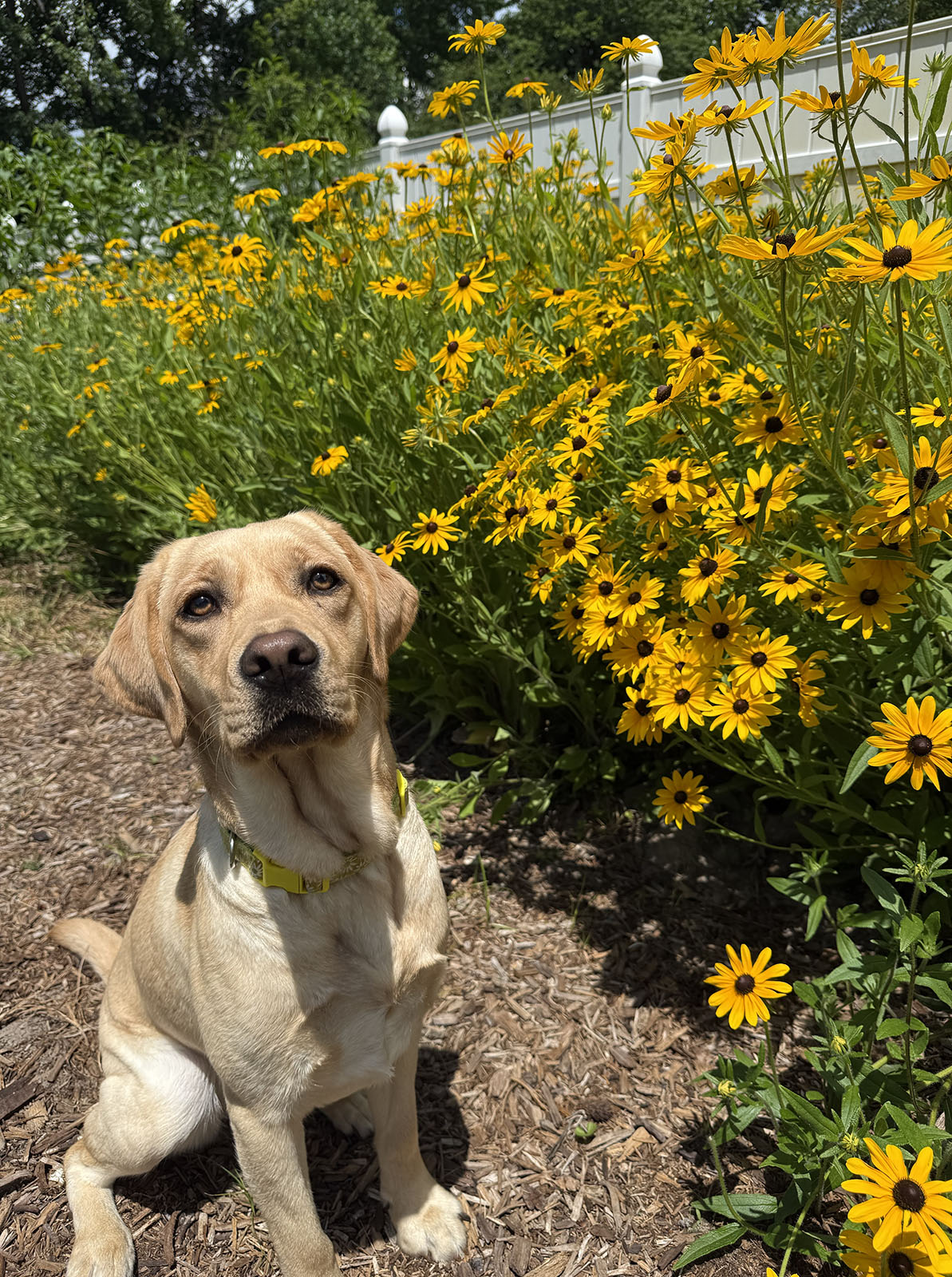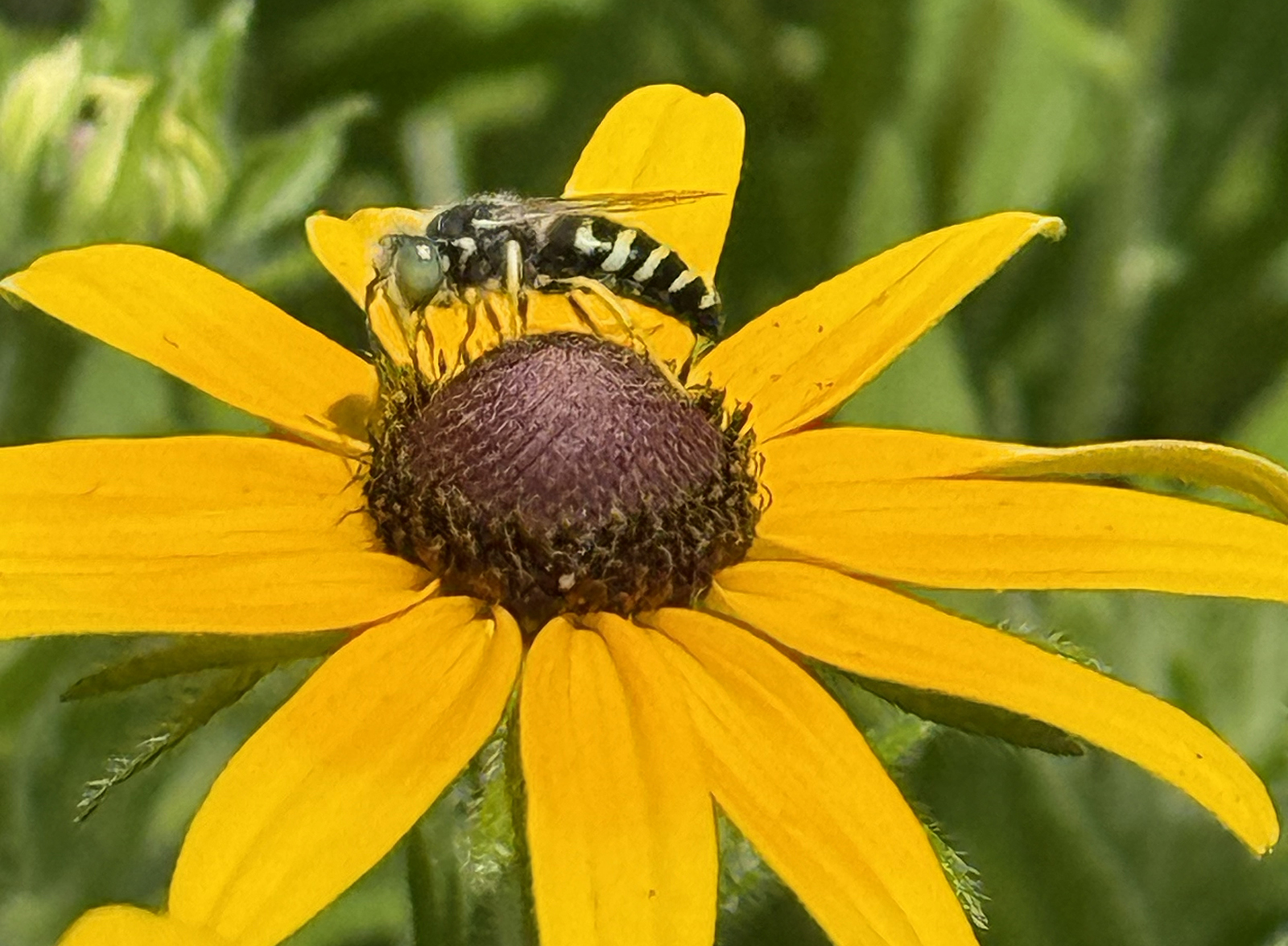Sleep, Creep, Leap: What to Expect When You Plant a Virginia Native Pollinator Seed Packet
By Stephen Living/DWR
Photos by Stephen Living/DWR
The Virginia Department of Wildlife Resources (DWR) has been curating Virginia Native Pollinator Seed Packets with species that are broadly native across Virginia, support a variety of wildlife, and bloom across as much of the growing season as possible. These seed mixes can help you create a Habitat at Home for pollinators.
In 2023, I was excited to have one of the first seed packets produced, and I found a 10- square-foot patch of turf I could convert. I prepared it and planted in the fall. But, as my results show, you have to be patient to see dramatic results! The catchphrase for growing perennial native wildflowers from seed is: First year sleep; second year creep; third year leap.
Year One – Sleep
When temperatures began to warm up in spring 2024, I started checking for germinating seeds. It’s a little worrisome and can be tricky to tell what might be sprouting when plants are very tiny. Growing from seed is a bit of an act of faith. Sure enough, I started to see the feather-shaped leaves of the annual sensitive pea, followed by the fuzzy leaves of black-eyed Susan. Both of these species grow readily from seed. As the spring progressed, I was thrilled to see some wild bergamot and some butterfly milkweed sprouting as well. These plants are a little slower to germinate and will generally spend the first year or two growing and setting roots before the bloom and become obvious.
By the time summer rolled around I had a pretty good crop of blooming sensitive pea and black-eyed Susans.

Even with my thorough preparation, there were still some weeds to deal with. Two that I spent some time hand pulling included crabgrass and yellow-nutsedge. Annual weeds like sow thistle got a toehold as well. For these annual weeds, I just made sure to cut the flower heads off so they wouldn’t set a new crop of seeds.
Some native plants worked their way into the planting as well. Virginia creeper grew through the fence and the bird deposited some pokeweed. I let both if these plants do their thing elsewhere in the yard, but they could overpower this small planting, so I removed them. As the season wound down, I didn’t dead-head or remove stalks at the end of the season. Left standing, they provide cover and places for insects to overwinter. I did clear out underneath the sensitive pea and some of the black eyed Susans to give their seeds some bare soil to land on and sprout next year.
Year Two – Creep
My pollinator patch is a sea of black-eyed Susans!

This year only a single sensitive pea sprouted, but a few eastern columbine volunteered from seeds blown across the yard from another planting. Weeds are not a problem at all this year—the black eyed Susans aren’t leaving them any room. As I push aside the stalks, I find some wild bergamot and butterfly milkweed growing underneath, quietly establishing roots systems that will let them jump up and really show out next year. One of the butterfly milkweeds had a leg up and put on a beautiful display of bright orange flowers. Not to be outdone, one wild bergamot rose above the sea of yellow black-eyed Susans with its beautiful unique pink flower.

Butterfly milkweed
There are still some species in the seed mix that I haven’t seen evidence of yet. I’m hoping that they’re “creeping” under the canopy and will make themselves known next year. The two species I haven’t seen so far are eastern gray beard tongue and smooth blue aster. I’m hopeful that next year will see these species LEAP onto the scene. Not every site will be appropriate for every species in the seed mix, but the variety ensures that some will establish well. Most importantly, the pollinators have found it. So far I’ve seen leafcutter bees, sweat bees, bumble bees, eastern-tailed blue butterflies, flower flies, and skipper butterflies.

Legal Disclaimer:
EIN Presswire provides this news content "as is" without warranty of any kind. We do not accept any responsibility or liability for the accuracy, content, images, videos, licenses, completeness, legality, or reliability of the information contained in this article. If you have any complaints or copyright issues related to this article, kindly contact the author above.
